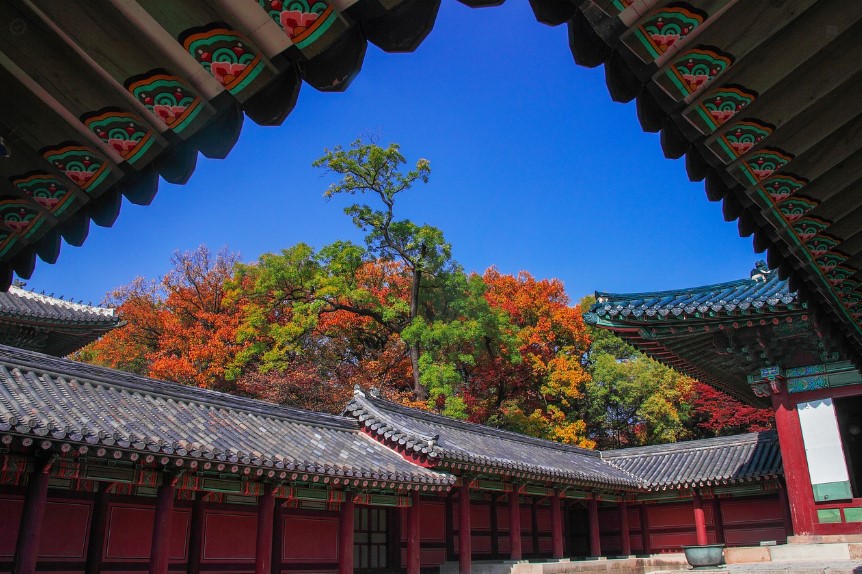A Journey Through History at Changgyeonggung Palace

When visiting Seoul, many travelers flock to the more famous palaces, but Changgyeonggung Palace is a hidden gem that offers a more intimate glimpse into Korea’s royal past. With its lush gardens, peaceful atmosphere, and unique historical background, this palace is well worth a visit. Here’s everything you need to know about Changgyeonggung and why it should be on your list of must-see palaces in Korea.
A Brief History
Changgyeonggung was originally built in 1483 by King Seongjong of the Joseon Dynasty as a residence for the queens and dowager queens. Unlike other palaces that were primarily used for political affairs, Changgyeonggung was built as a more relaxed space for the royal family, designed to accommodate their daily lives and private activities.
In the early 20th century, during the Japanese occupation of Korea, the palace was tragically turned into a zoo and botanical garden. Many of the palace’s original structures were damaged or destroyed during this period. However, after Korea’s liberation in 1945, efforts were made to restore the palace to its former glory, although the memories of its transformation during colonial times still linger in its history.
Today, Changgyeonggung stands as a reminder of Korea’s tumultuous past, while also offering visitors a peaceful retreat from the bustling city.
Key Features and Highlights
1. Myeongjeongjeon Hall:
Myeongjeongjeon is the main hall of Changgyeonggung and one of the oldest remaining throne halls in Korea, originally built in 1484. This was the site where important state ceremonies and royal events were held. The modest yet elegant design of Myeongjeongjeon reflects the palace’s role as a residence for queens rather than a political hub.
The hall’s single-story design contrasts with the grander throne halls of other palaces, but it still maintains a dignified beauty. The wooden beams and tiled roof, along with the surrounding open courtyard, give Myeongjeongjeon a distinct charm.
2. Okcheongyo Bridge:
This stone bridge is one of the most picturesque spots in the palace and is the oldest bridge in any of Seoul’s palaces. It spans a small stream that runs through the grounds, and walking across it feels like stepping back in time. The bridge’s decorative carvings of animals and clouds add to its historical significance.
3. Chundangji Pond:
Originally a pair of rice paddies, Chundangji Pond was transformed into a tranquil body of water during the Japanese occupation. It’s now one of the palace’s most scenic spots, surrounded by trees and offering a quiet place to reflect and relax. The small pavilion near the pond is a peaceful area where visitors can sit and take in the natural beauty of the surroundings.
4. Haminjeong Pavilion:
One of the most beautiful structures in Changgyeonggung, Haminjeong Pavilion was where the kings would relax and enjoy leisurely moments with his subjects. The open design allows for a cooling breeze to flow through, making it an ideal spot for contemplation. The pavilion’s simple yet graceful design is a testament to the understated elegance of Joseon Dynasty architecture.
Why Visit Changgyeonggung?
1. A Palace Steeped in Tranquility:
Changgyeonggung is less crowded than other palaces in Seoul, making it the perfect place for a peaceful stroll. The palace is surrounded by greenery, and the gardens offer a serene atmosphere, ideal for those seeking a quiet retreat. The large, shaded trees and blooming flowers make this a particularly lovely spot during spring and autumn.
2. A Glimpse into Royal Life:
Unlike the grander palaces like Gyeongbokgung, which were designed for official functions, Changgyeonggung was built as a residence for the queens and concubines of the Joseon Dynasty. This gives the palace a more personal and intimate feel, offering visitors a unique insight into the private lives of the royal family.
3. Historical Significance:
Changgyeonggung’s transformation during the Japanese occupation into a zoo and botanical garden gives it a poignant place in Korean history. While much of the palace has been restored, its story serves as a reminder of Korea’s struggles during colonial times. Visiting the palace offers a chance to reflect on this difficult period in Korean history.
4. Proximity to Other Attractions:
Changgyeonggung Palace is located right next to Changdeokgung Palace, and the two are often visited together. If you’re already planning to visit Changdeokgung, it’s easy to add Changgyeonggung to your itinerary as well. In fact, a combined ticket is available, which gives access to five palaces, including Changgyeonggung and Changdeokgung.
Practical Information
- Location:
Changgyeonggung Palace is located at 185 Changgyeonggung-ro, Jongno-gu, Seoul, South Korea. The nearest subway station is Hyehwa Station (Line 4, Exit 4) or Anguk Station (Line 3, Exit 3). - Opening Hours:
The palace is open from 9:00 AM to 5:30 PM (April to October) and 9:00 AM to 5:00 PM (November to March). The last admission is one hour before closing. - Admission Fees:
Admission to Changgyeonggung Palace is 1,000 KRW (approximately 1 USD). A combination ticket that includes access to Changgyeonggung, Changdeokgung, Gyeongbokgung, and other historical sites costs 10,000 KRW (approximately 10 USD). - Best Time to Visit:
Changgyeonggung is beautiful in every season, but spring is particularly popular when the cherry blossoms bloom around the palace grounds, and autumn offers stunning foliage that enhances the peaceful atmosphere.
Final Thoughts
Changgyeonggung Palace may not be as grand as some of Seoul’s other palaces, but it offers a quieter, more reflective experience. With its beautiful gardens, peaceful ponds, and fascinating history, it’s the perfect place to escape the city’s hustle and bustle while learning about Korea’s royal past.
If you’re a history enthusiast or just looking for a tranquil spot to explore in Seoul, Changgyeonggung provides a perfect blend of history, culture, and natural beauty. Combine it with a visit to nearby Changdeokgung for a truly enriching experience!
